TOCPythonLanguageCode LineCode BlockFunctionsCommon PackagesResource and LinkKnowledge BaseHow ToFAQ
Draft for Information Only
Content
Python Object
Python Object Property
Identity Property
Type Property
Value Property
Python Object Data Types
Immutable Data Types
Numeric Data Types
Booleans
Integers
Floats
Complex Numbers
Fractions
Decimals
Strings
Unicode String
Bytes
Frozen Sets
Tuples
Mutable Data Types
Lists
Byte Arrays
Sets
Dictionaries
Source and Reference
Python Object
Python object is a logical representation used to represent the physical data stored in memory.Objects are never explicitly destroyed; however, when they become unreachable they may be garbage-collected. An implementation is allowed to postpone garbage collection or omit it altogether -- it is a matter of implementation quality how garbage collection is implemented, as long as no objects are collected that are still reachable. (Implementation note: the current implementation uses a reference-counting scheme which collects most objects as soon as they become unreachable, but never collects garbage containing circular references.) Note that the use of the implementation's tracing or debugging facilities may keep objects alive that would normally be collectable. Also note that catching an exception with a `try...except' statement may keep objects alive. Some objects contain references to ``external'' resources such as open files or windows. It is understood that these resources are freed when the object is garbage-collected, but since garbage collection is not guaranteed to happen, such objects also provide an explicit way to release the external resource, usually a close() method. Programs are strongly recommended to explicitly close such objects. The `try...finally' statement provides a convenient way to do this.
Python Object Property
The three basic properties of Python object are identity, type, and value.Identity Property
Identity is an unique integer value used to represent a Python object. Since the identity of an object also represents the logical physical location of the corresponding object value, the identity of a Python object remains unchange once the identity has been created. The identity property of a Python object can be returned by theType Property
Type is a predefined type name of the stored data value. Type is used to specify the allowed data type that can be stored in the object and operations that are supported by object type. The type of a Python object remains unchange once the data type are specified. The type property of a Python object can be returned by theTypes affect almost all aspects of object behavior. Even the importance of object identity is affected in some sense: for immutable types, operations that compute new values may actually return a reference to any existing object with the same type and value, while for mutable objects this is not allowed. E.g., after "a = 1; b = 1", a and b may or may not refer to the same object with the value one, depending on the implementation, but after "c = []; d = []", c and d are guaranteed to refer to two different, unique, newly created empty lists. (Note that "c = d = []" assigns the same object to both c and d.)
Value Property
Value is the logical value of an object. Depending on the Python type property, the Python value property can be divived into two catalogues, mutable and immutable according to the immutability of data object.Python Object Data Types
Python object data types can be divived into two catalogues, mutable and immutable object data types according to the immutability of data type.Immutable Data Types
Value of immutable data types can not be changed after creation. Typical immutable types are numeric data types, strings, bytes, frozen sets, and tuples.Numeric Data Types
Booleans
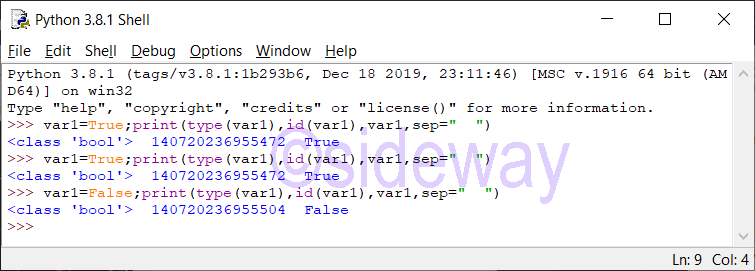
Integers
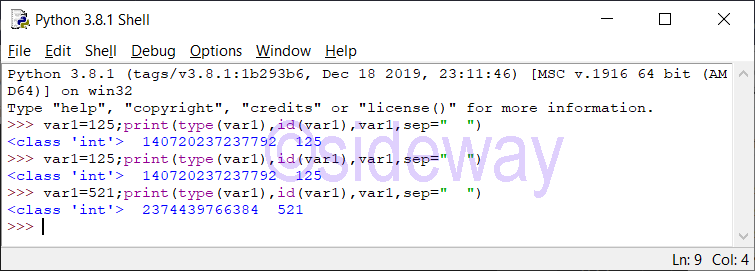
Floats
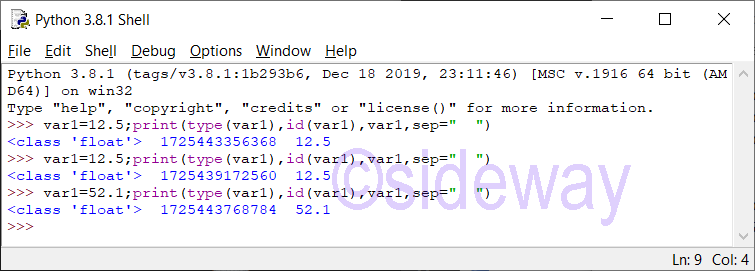
Complex Numbers
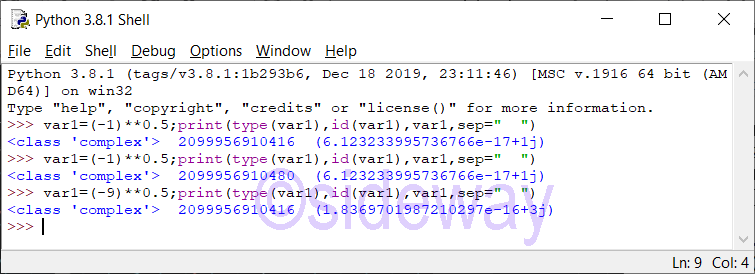
Fractions
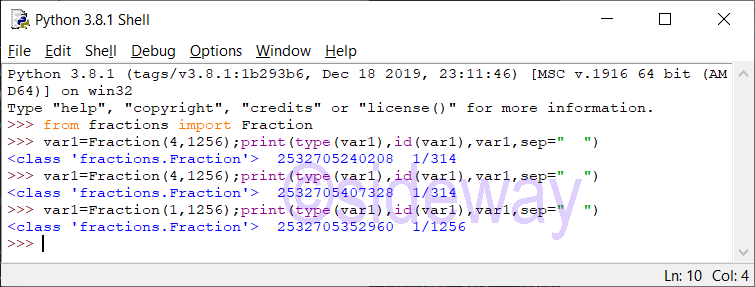
Decimals

Strings
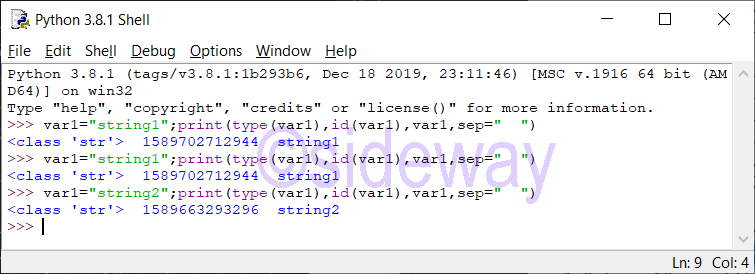
Unicode String
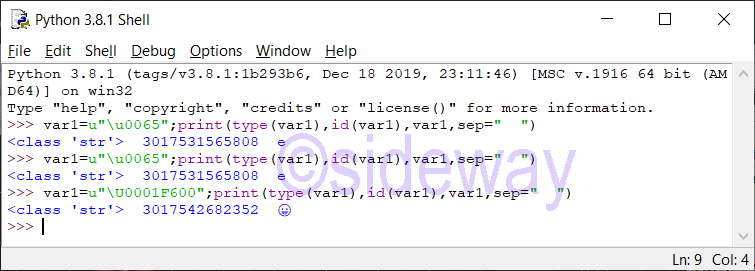
Bytes
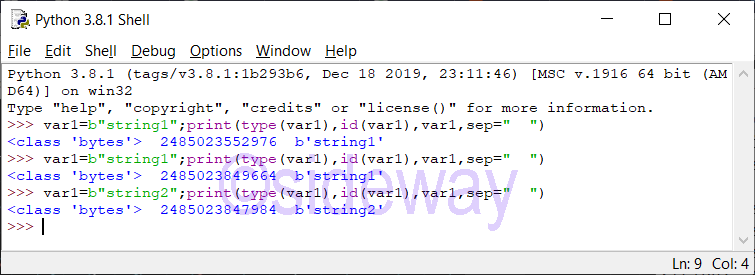
Frozen Sets
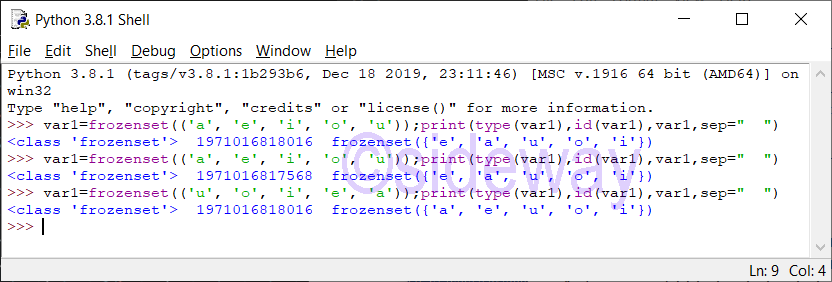
Tuples
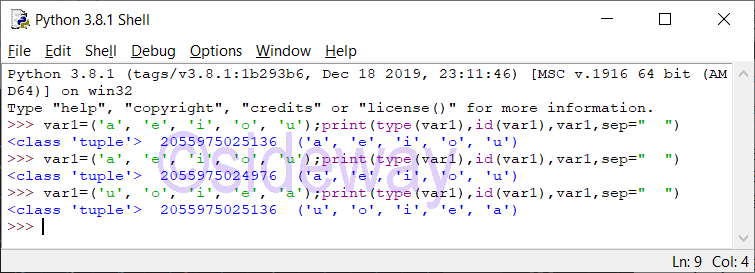
Mutable Data Types
Value of mutable data types can be changed after creation. Typical mutable types are lists, byte arrays, sets, and dictionaries. These are mutable sequence.Lists
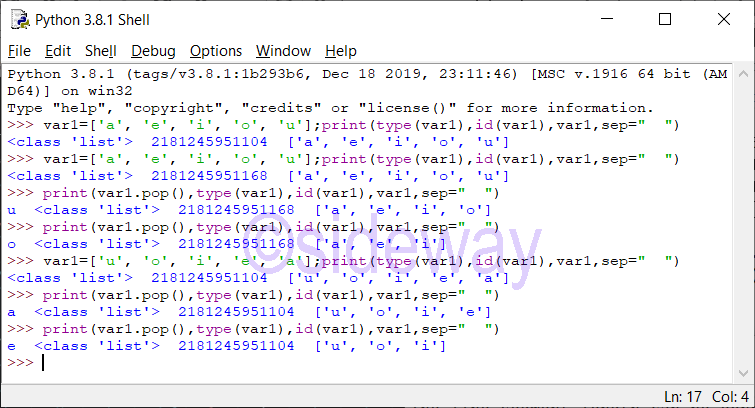
Byte Arrays
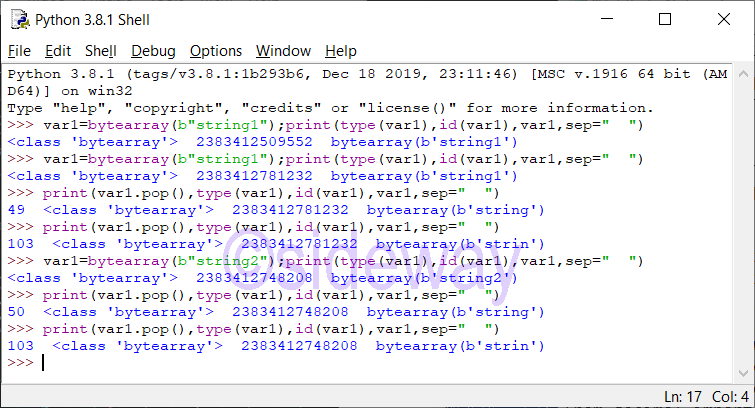
Sets
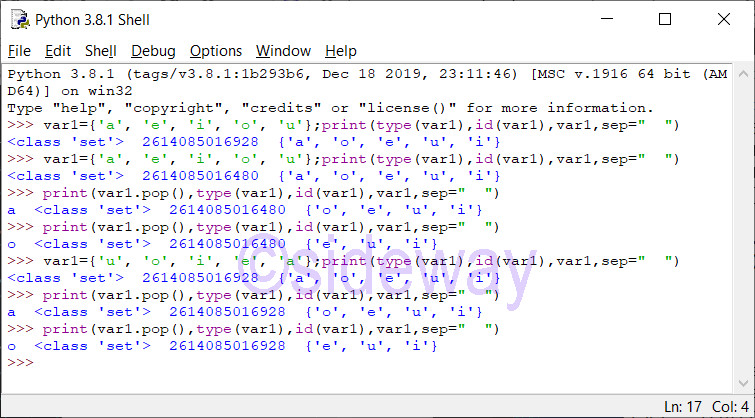
Dictionaries
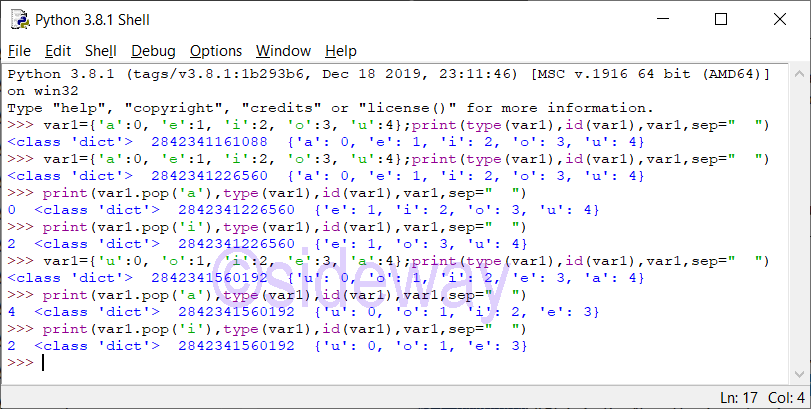
Source and Reference
©sideway
ID: 200500702 Last Updated: 5/7/2020 Revision: 0
Latest Updated Links
- Ikea TISKEN toilet roll holder(last updated On 11/3/2025)
- Philips CL400 Ceiling Light 36W(last updated On 11/2/2025)
- Philips CL400 Ceiling Light 24W(last updated On 11/1/2025)
- Philips CL400 Ceiling Light 13W(last updated On 10/30/2025)
- Ikea TISKEN basket(last updated On 10/29/2025)
- Ikea TISKEN towel rack(last updated On 10/28/2025)
- Ikea REXBEGONIA mattress protector(last updated On 10/27/2025)
- Ikea KEJSAROLVON mattress protector(last updated On 10/26/2025)
- Ikea KVARNVEN ergonomic pillow(last updated On 10/25/2025)
- Ikea BRUKSVARA pocket prung mattress(last updated On 10/24/2025)
- Ikea VÅGSTRANDA pocket sprung mattress super firm(last updated On 10/23/2025)

 Nu Html Checker
Nu Html Checker  53
53  na
na  na
na
Home 5
Business
Management
HBR 3
Information
Recreation
Hobbies 8
Culture
Chinese 1097
English 339
Travel 18
Reference 79
Hardware 26![]()
Computer
Hardware 259
Software
Application 213
Digitization 37
Latex 52
Manim 205
KB 1
Numeric 19
Programming
Web 289
Unicode 504
HTML 66
CSS 65
SVG 46
ASP.NET 270
OS 431
DeskTop 7
Python 72
Knowledge
Mathematics
Formulas 8
Set 1
Logic 1
Algebra 84
Number Theory 206
Trigonometry 31
Geometry 34
Calculus 67
Engineering
Tables 8
Mechanical
Rigid Bodies
Statics 92
Dynamics 37
Fluid 5
Control
Acoustics 19
Natural Sciences
Matter 1
Electric 27
Biology 1
